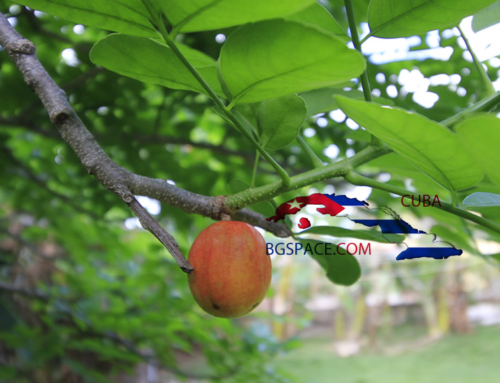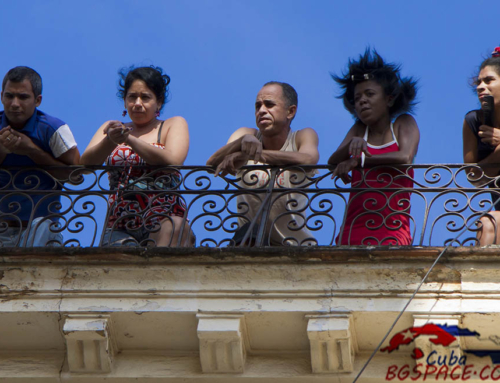Pocket Money in Cuba
There are two currencies is Cuba: Convertible Peso /CUC/ and Peso Cubano. The CUC is intended for the tourists and is provided at the exchange desks /cadecas/. You can receive Peso Cubano only in return for Convertible Peso. I don’t recommend converting money at the airport, but rather somewhere in the centre where the currency rate is better. Keep in mind that exchange desks in Cuba are state, so the rates are fixed and there are no commissions. The airport desks make the only exception.
The currency introduced by the government CUC /Convertible Peso/ aims to displace the USD and EUR as a means of payment on the Island of Freedom, and moreover, successfully. By the way, I advise you to learn the difference between Convertible Peso and Peso Cubano, since the correlation between them is 1:24. Scroll down to see how each currency note looks.
Use the currency calculator here:
[cbcurrencyconverter]
The exchange desk on Street 23rd /the biggest in Havanа/ next to Copelia works until 6.00 pm on weekdays and 4.00 pm on weekends. The rest of the desks most often work until 4.00 pm.
The CUC is the main monetary unit in the whole of Havanа. However, the locals receive their salaries in Peso Cubano. As a tourist, you can acquire Peso Cubano on the market if you buy fruit and vegetables, pay in Peso Convertible and receive your change in Peso Cubano. You can use it for market shopping and in the countryside restaurants, but not in Havanа. You can also use Peso Cubano to buy some pizza or a sandwich from the local food shops. This is how a Convertible Peso note looks like:
And this is Peso Cubano:
In the Province around Santiago de Cubа, for example, prices are 10-15 % cheaper. So we reached the most important question my tourists always ask me – how much pocket money do I need per day.
Cuba is not a cheap destination. Dinner in a private restaurant without any alcoholic drinks costs between 10 and 15 CUC /1 CUC = 1 USD/. A taxi between Vedado neighbourhood and Old Havanа costs between 4 and 7 USD and a taxi to a nightclub costs 10 – 15 USD depending on the destination.
- Alcohol in private restaurants: a small Havan Club /mature/ costs between 2 and 4 USD and a beer – between 2 and 3 USD. A Mohito or Cuba Libre respectively – 3 and 5 USD.
- Dinner in a private restaurant /I don’t recommend one if it’s in Havanа/ can cost from 4 do 7 CUC, but you will have to pay in Peso Cubano, so between 96 and 168 Peso Cubano.
- Breakfast in a guesthouse costs 5 CUC. [tooltip title=”1 кук- 1 американски долар”][/tooltip]
- If you want to save some money you should shop like the Cubans do – on the markets with working time from Tuesday to Sunday between 7.00 am and 4.00 pm. Also, you will need Peso Cubano. Vegetables, fruit, beans, meat, and rice, for example, will cost you around 10 CUC. You won’t find such goods in the supermarkets, especially at this price. Eggs are attainable only at open markets, but you need to get up very early.
- Bars and clubs entrances. In Havanа you can watch the most popular salsa and reggaeton groups. The entrance for Casa de La Musica in Miramar is between 10 and 25 CUC /10 – 25 USD/ depending on the group. A cocktail in the bar costs 3 – 4 CUC, a beer – 2 CUC.
- Souvenirs, cigars and alcohol. Paintings cost between 20 and 30 CUC, and if they are genuine – between 30 and 200 CUC. Different kinds of souvenirs cost between 1 and 10 CUC. There are hats for 3 CUC and shirts for 10 – 15 CUC. You can find rum for 4 – 10 CUC. The cigars from stores will cost you between 200 and 400 CUC per box /there are 25 cigars in one box for the brands Cohiba, Monte Cristo, for example/.
To conclude, you will need between 30 and 50 CUC per day.
Money withdrawal.
In Havanа there are quite a few spots where you can withdraw money.
NOTE! Before you depart make sure your bank is not associated with the US. If so it is very probable that you won’t be able to withdraw money in Cuba. It is best to have a card issued by a European bank such as Societe Generalе, Unicredit Bulbank, First Investment Bank and others.
The reason for this obstacle is the trade embargo /ban/ imposed by the US on the citizens and economy of the Caribbean country. Cuba itself, however, gives as good as it gets.
A Visa Card is applicable in Cuba, unlike a Master Card. A tourist of mine once withdrew 300 BGN /150 EUR/ with her Post Bank card and was charged 28 BGN /16 EUR/ for taxes. On the other hand, another tourist used his Unicredit Bulbank Card to withdraw 200 CUC / 200 USD/ and was charged a tax of only 7 CUC. READ MORE ABOUT THE CURRENCIES IN CUBА HERE.

















